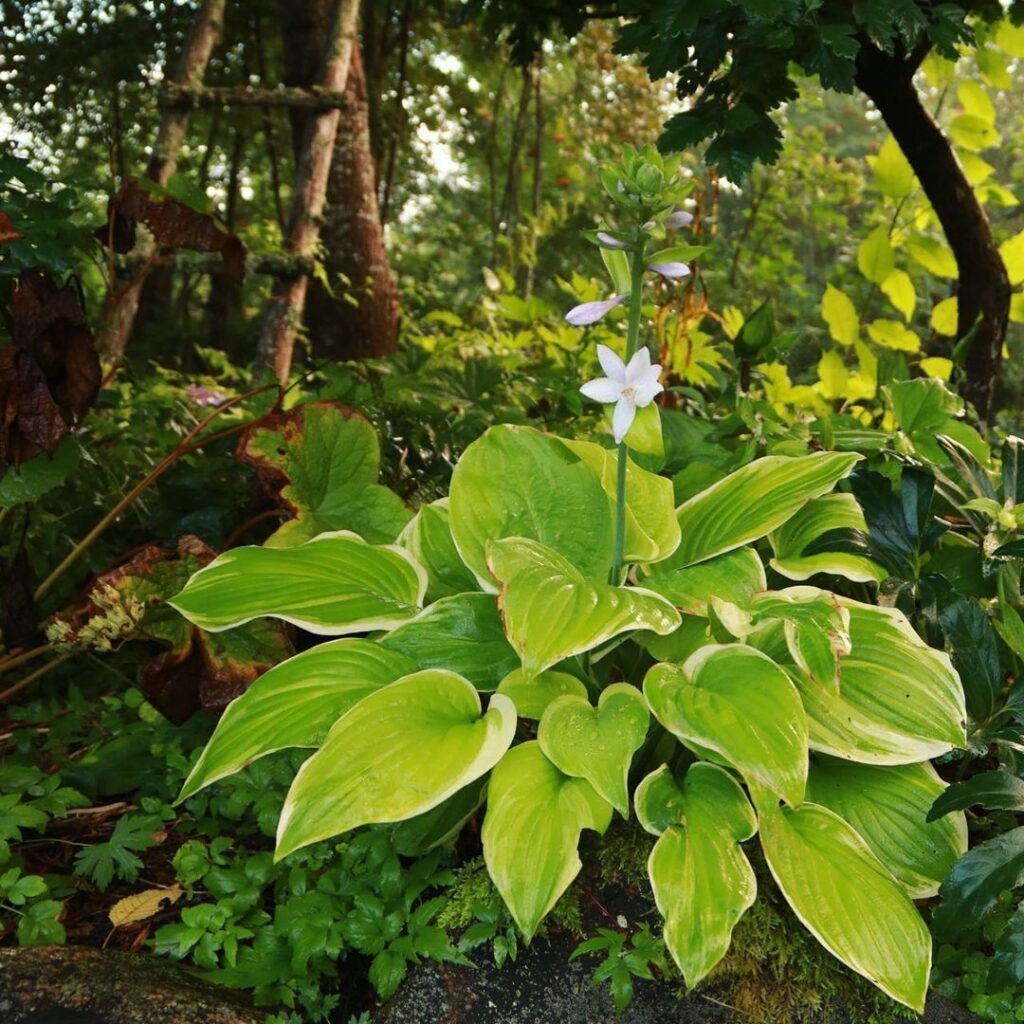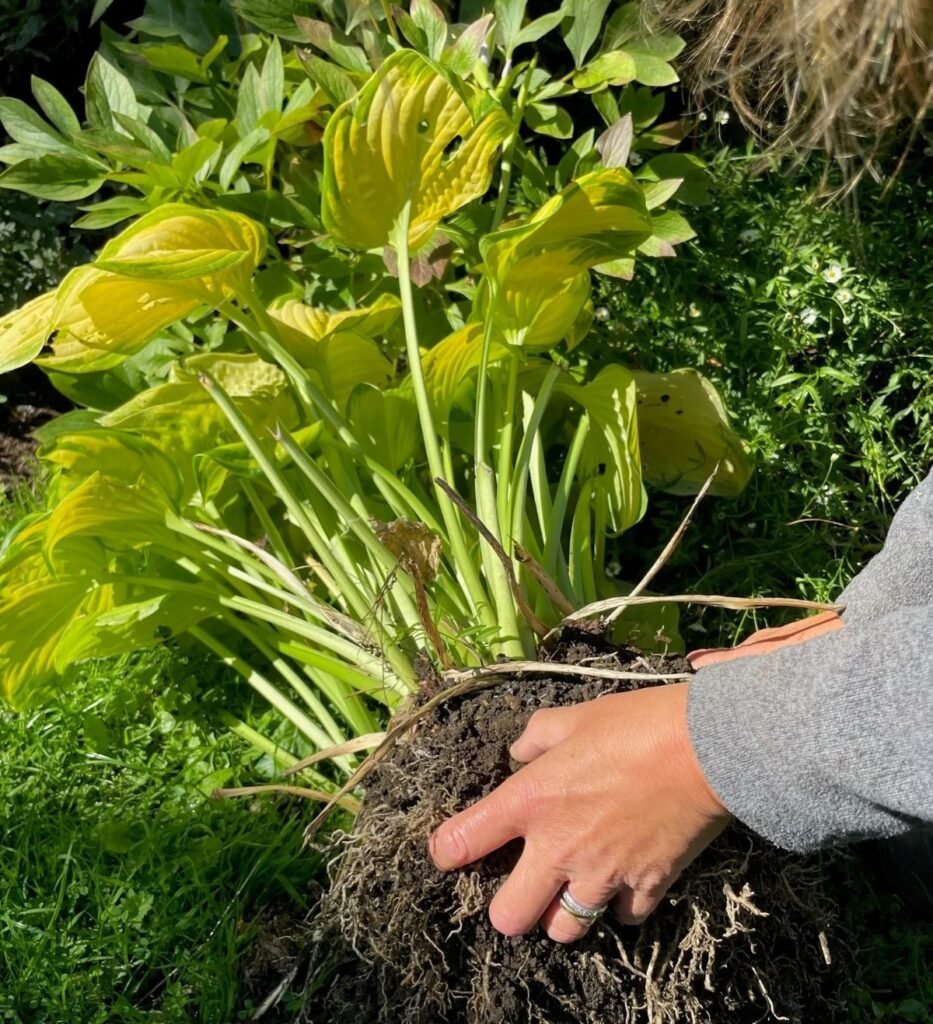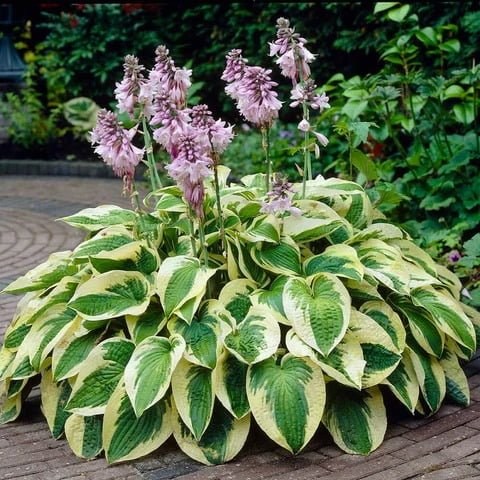Discover which hosta varieties can thrive in sunny locations with this comprehensive guide. Explore sun-tolerant options like Sum and Substance, Halcyon, and Patriot, and learn valuable tips for successfully growing hostas in the sun. Embrace these hardy beauties in your sunny garden.
Hostas are a beloved perennial plant known for their lush foliage and ability to thrive in shady areas. However, if you’re a gardener with a sunny outdoor space, you might be wondering if it’s possible to grow these stunning plants in direct sunlight. The good news is that while most hostas prefer partial shade, there are several varieties that can tolerate and even thrive in sunny conditions. In this article, we’ll explore some of the best sun-tolerant hosta varieties and provide tips for successfully growing them in sunny locations.
Understanding Hosta Sun Tolerance

Here’s a short information chart for Hostas:
| Attribute | Information |
|---|---|
| Botanical Name | Hosta spp. |
| Plant Type | Herbaceous perennial |
| Soil Type | Rich, well-draining soil |
| Color Varieties | Various, including green, blue, yellow, and variegated |
| Zones | 3-9 (USDA Hardiness Zones) |
| Exposure | Part to full shade |
| Bloom Time | Summer |
| Height/Spread | 6 inches to 3 feet tall / 1-6 feet wide |
Before we dive into specific varieties, it’s important to understand that hostas are native to the shady understories of forests in Japan, China, and Korea. As a result, most varieties are naturally adapted to grow in partial or even full shade. However, over time, plant breeders have developed cultivars that can handle more sun exposure.
While sun-tolerant hostas can thrive in sunny conditions, it’s important to note that they still require some protection from intense afternoon sun, especially in hot climates. Prolonged exposure to direct, scorching sunlight can lead to leaf scorch, dehydration, and overall stress on the plant.
Sun-Tolerant Hosta Varieties

Here are some of the best hosta varieties that can handle sunny locations:
- Sum and Substance: One of the most popular sun-tolerant hostas, Sum and Substance can handle full sun to partial shade. It’s a large hosta with thick, slug-resistant leaves that can grow up to 3 feet tall and wide.
- Halcyon: This hosta variety features blue-green leaves and can tolerate full sun in cooler climates or partial sun in warmer areas.
- Patriot: Patriot hostas have thick, glossy, dark green leaves with white margins and can handle full sun to partial shade.
- August Lily: A compact hosta with yellow-green leaves, August Lily can grow well in full sun to partial shade conditions.
- Sun Power: As the name suggests, Sun Power hostas are bred specifically for their sun tolerance. They can handle full sun and have thick, corrugated leaves.
- Guacamole: Another sun-tolerant variety, Guacamole hostas have large, golden-green leaves and can grow in full sun to partial shade.
- Mildred Seaver: This hosta can tolerate full sun and has bright yellow leaves with a white margin.
- Fragrant Bouquet: With its fragrant flowers and ability to grow in full sun to partial shade, Fragrant Bouquet is a great choice for sunny spots.
Tips for Growing Hostas in the Sun

While sun-tolerant hostas can handle more sun exposure than their shade-loving counterparts, they still require some special care and attention to thrive in sunny locations. Here are some tips for successfully growing hostas in the sun:
- Providing Shade: Even sun-tolerant hostas can benefit from some shade, especially during the hottest parts of the day. Consider planting them in areas with morning sun and afternoon shade, or in locations that receive dappled shade throughout the day.
- Watering: Hostas in sunny locations will require more frequent watering to prevent dehydration and leaf scorch. Aim to keep the soil consistently moist, but not waterlogged, and water more frequently during hot, dry periods.
- Mulching: A layer of organic mulch around the base of your hostas can help retain moisture and protect the roots from extreme temperatures.
- Acclimation: If you’re transplanting hostas from a shady area to a sunny location, it’s important to gradually acclimate them to the new conditions. Start by exposing them to a few hours of direct sun each day and gradually increase their sun exposure over a period of several weeks.
- Fertilizing: Hostas grown in sunny locations may require more frequent fertilization to compensate for the increased stress and growth rate. Use a balanced, slow-release fertilizer formulated for shade-loving plants, and follow the manufacturer’s instructions for application rates and timing.
- Pest and Disease Management: Hostas growing in full sun may be more susceptible to pests and diseases, such as leaf scorch, fungal diseases, and slug or snail damage. Monitor your plants closely and take appropriate measures to control any issues that arise.
By selecting the right sun-tolerant hosta varieties and providing them with the proper care and attention, you can successfully grow these beautiful plants in sunny locations and add some lush, textural interest to your sunny garden beds or borders.
Embracing Sun-Tolerant Hostas

While hostas are often associated with shady gardens, the availability of sun-tolerant varieties has opened up new possibilities for gardeners with sunny spaces. By incorporating these hardy cultivars into your landscape, you can enjoy the beauty and versatility of hostas while taking advantage of the sunny areas in your outdoor living spaces.
Remember, sun-tolerant hostas still require some protection from intense afternoon sun and may need additional care and attention to thrive in sunny conditions. But with the right varieties and proper care, these stunning plants can add a touch of lush, tropical flair to even the sunniest of gardens.
Pingback: Plants as Corporate Gifts Gardeners Schools
Pingback: Best companion plants for Celery – Guide Gardener Sch
Pingback: 19 Best Plants for a Welcoming Front Door - Gardener's School
Pingback: Red Hosta Plants : Adding Vibrant Color to Shady Gardens
Pingback: Zone 6 Perennials : Expert Guide to Hardy Flowering Plants
Pingback: Plants as Corporate Gifts Gardeners Schools
Pingback: Francee Hosta : Your Complete Guide to Growing This Stunning Shade Plant (2024)